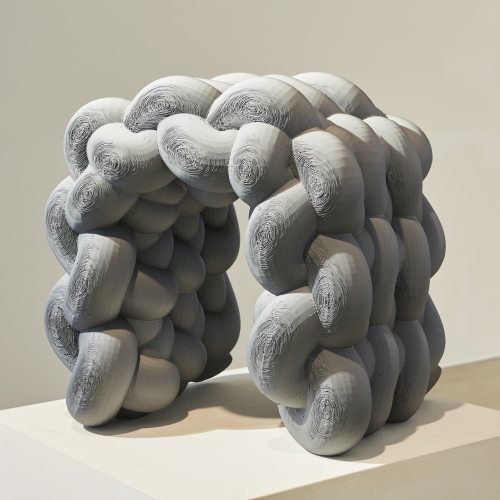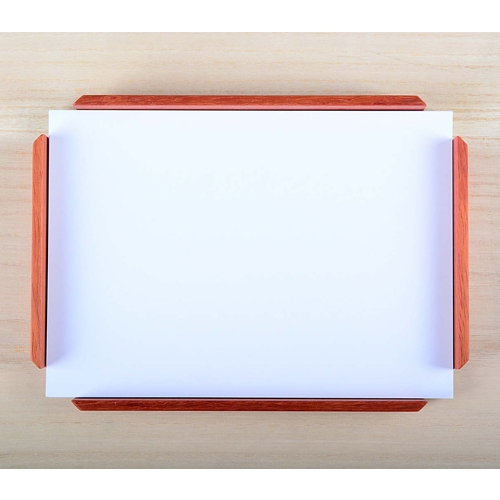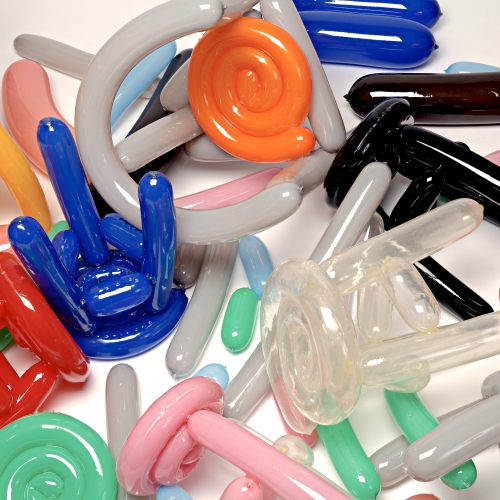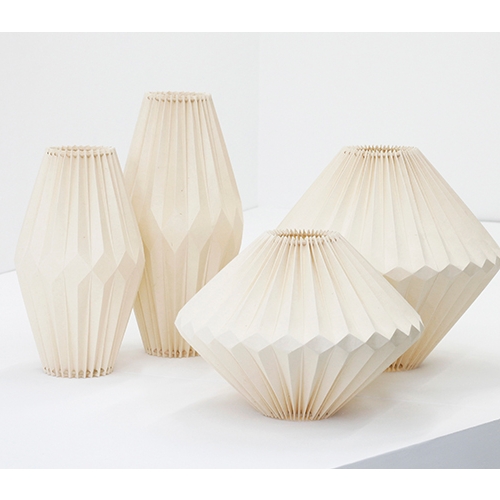Kang Jihye’s attention has been directed towards the material of transparent acrylic. The purity series, composed of a combination of acrylic and stainless steel, is an investigation into the refractive qualities of acrylic. While the furniture pieces such as tables, chairs, partitions and cabinets, distinct for their non-coloured solid material and its refined form, may seem reserved at first sight, in reality, these pieces have a pronounced aptitude for melding in harmoniously with their surroundings. This is due to the refractive qualities of acrylic, activated wherever it might be placed, by whomever it is used by. Acrylic refracts all elements, ranging from stainless steel, the users and its surrounding environment, embracing these elements as part of the furniture. I met with Kang Jihye, who has recently been constructing tables out of resin and acrylic, or chairs, solely out of acrylic, as part of a constant investigation into the qualities of the material acrylic.
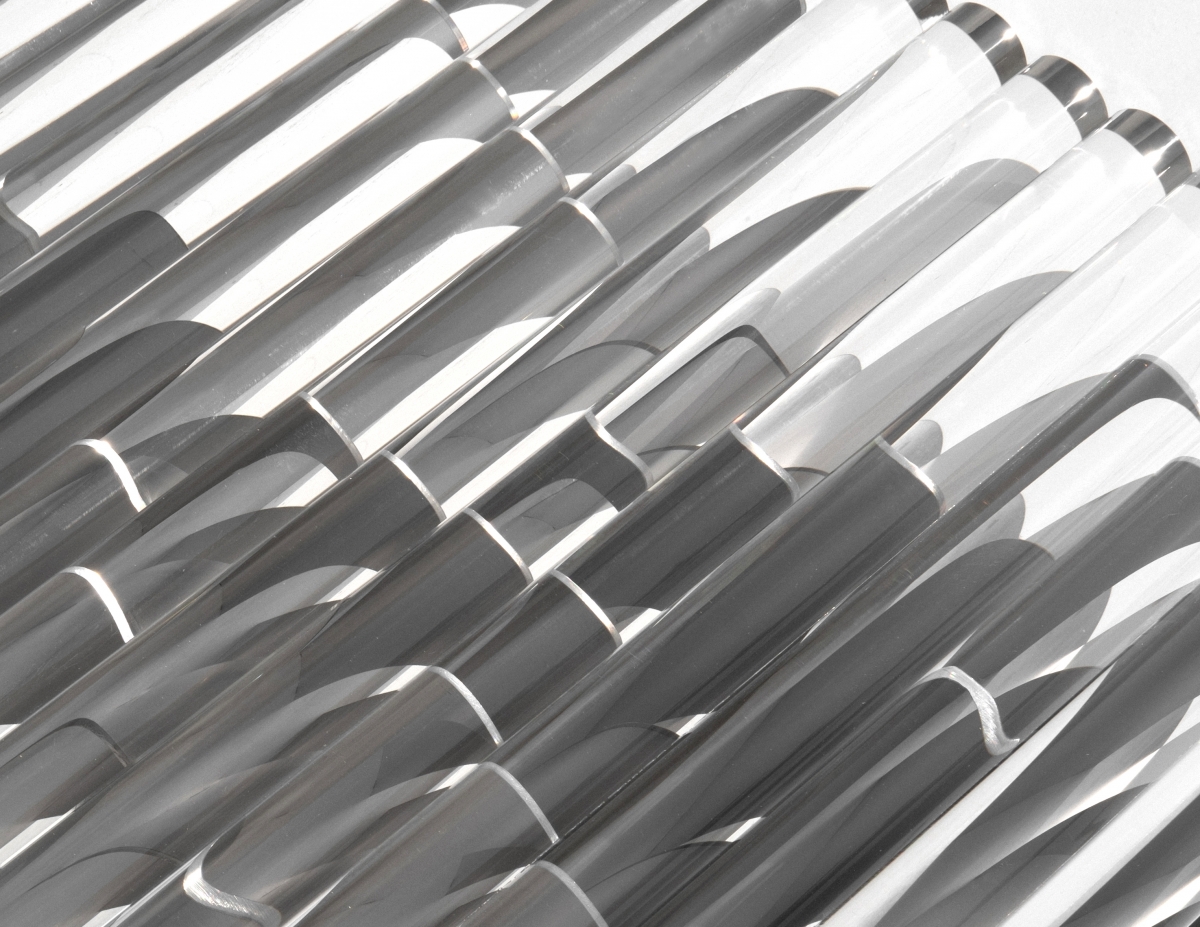
Kang Jihye, low table 01, acrylic and stainless steel, 600×600×300mm, 2017 (©Ahn Sunguen)
Interview Kang Jihye × Choi Eunhwa
Choi Eunhwa(Choi): What led you to embark on the purity series?
Kang Jihye (Kang): I first started using acrylic for my graduation exhibition at university. At the time, the theme of the exhibition was ‘identity’, and I created wisdom using sheets of acrylic. I wished to express my identity through a chair. I wished to see each sheet as an important event in my life, and I conceived of an idea to establish my identity by gathering these many events together in a single place. Also, I could express how one’s memories and sentiments about an event can be altered over time through the refractive qualities of the acrylic. In that process, I became more captivated by the qualities of acrylic. If, as a student, I hoped to concentrate on how to effectively express a certain theme, from 2017 onwards, I have been pursuing the purity series by concentrating on the qualities and effects of acrylic as a material, such as transparency, reflection, refraction and penetration.
Choi: If you used acrylic sheets in earlier years, more recently you have begun to concentrate on cylindrical acrylic forms.
Kang: I use pre-made acrylic, and this guarantees an extremely wide range of materials from which to choose. Not only sheets, but also in terms of batons, the surfaces are composed of many different types such as rectangles, rhombuses, circles, and so on. Among these, I feel like the circular surface is most apt at expressing the most aesthetically pleasing effect of refraction. It produces a soft and sophisticated effect when it captures a certain form and creates a refracted image. The thickness of the acrylic stick also plays a part: too thick and there will only be a few refracted images, otherwise, too thin and it can seem a bit too much. I modify the thickness according to the function of the furniture and overall proportions of the form, generally using a thickness of 40ø. For a more dramatic effect, I used 20ø for partition 01.
Choi: While you have clung to the method of arranging cylindrical columns of the same thickness and length for acrylic materials, you tend to use a variety of lines, surfaces and volumes for the stainless steel combined with the acrylic columns. What inspired this variation?
Kang: To me, acrylic is a material with enormous potential. While I currently focus on the theme of refraction, I feel that this is only one of the possibilities of the material. Refraction itself is a quality in which it is impossible to predict the countless possibilities that are open to extending the work. Hence, I decided to embark upon this process through basic shapes. Within the boundaries of limiting myself to basic shapes, I experimented as much as possible with a variety of lines, surfaces and volumes. The debut piece of the purity series, low table 01 was planned with a variety of angles which would intersect with the acrylic when placing the steel planks. The degree of refraction changes according to the angle; the larger the intersecting angle, the more dramatic the effect.
Choi: Working with refraction using acrylic is quite a clear prevailing theme, yet the qualities produced by the work seem to be quite diverse.
Kang: In fact, in the beginning it felt simpler. I only focused on the changes produced in the refracted image created by the acrylic and the stainless steel according to the movement of users and changes in the line of perception. However, the more I dug into the subject, the more apparent things became. My work up to now can be described in three phases. The first stage investigates the interaction between the three elements of acrylic, stainless steel and the user. Low table 01, side table 01 and stool 01 are all fixed pieces of furniture, yet one can appreciate completely different refracted images according to the point from which the user is observing the scene. The second stage focuses on the relationship between acrylic and the user. At this stage, the user leaves his position of observing the refraction, and instead becomes the object of refraction himself. Chair 01 and partition 01 are works where the user using the furniture is reproduced as a refracted image onto the acrylic. The third stage involves the user directly moving and modifying the furniture, allowing the user to actively control the refraction effect. Cabinet 01 features circular shapes which can be rolled from side to side, and the acrylic can be opened like a sliding door, composing a myriad of different sizes, forms and colors of stored objects.
Choi: While it may seem like a detailed task, as it deals with the scientific effect of refraction, in fact it seems that the produced effect can be quite unpredictable.
Kang: Yes. It really is quite unpredictable. I particularly faced a lot of difficulties in the earlier stages. I tried to familiarize myself with the sense of refraction by selecting a variety of different acrylic surface forms, or changing the type of material to be combined with acrylic from metal to wood. While all of the furniture is prefabricated with a 1:10 scale mockup before manufacturing in real size, there were still several points that existed which I could not predict.
Choi: Do you also resolve any difficulties regarding the structure or the burden of the weight through 1:10 scale mockups?
Kang: Structure is very important, since the pieces are not objects on display, but actual practical objects which must embrace movement, where people can sit, touch, and put things on throughout their daily lives. I carefully consider how many acrylics I should combine, whether it may be appropriate as the backing of a chair, whether the stainless steel can be a good support for the heavy acrylic. While it is not easy, once I get started it becomes fun like solving a math problem. If there is still anything at all I feel worried about, I use a real size version of the furniture myself for about a year, to review its safety. This testing process is advantageous as it allows me to check the inconveniences in usage that could not be confirmed through the mockup.
Choi: It is fascinating that none of the joints can be seen. This purely emphasises the appearance of acrylic and stainless steel, like the title ‘purity’.
Kang: I conceal the joints so that one can concentrate solely on the qualities of the material. I employ a special adhesive to firmly stick together the acrylic parts, after securing a minimal area for joining them together by using a machine to sand down the length of the cylinders. The adhesive on the acrylic and stainless steel varies from piece to piece, for example, in low table 01 I made a hole in the acrylic and placed it on top of the stainless steel. This can be stabilised without instability because the lower half of the acrylic is heavy enough. On the other hand, in chair 01 and partition 01, the hole was made in the stainless steel, and the acrylic was fixed into it. While the acrylic cylinders may appear to be absolute cylindrical columns, in fact, they vary greatly in form, and as such it is important to accurately measure each one, to the last 0.1mm unit, to precisely drill any holes.
Choi: You often mention the word ‘transparency’ in relation to your work. What does the term transparency mean to you?
Kang: Unlike the sense of clarity instilled in solid materials, acrylic has the flexibility to appear differently according to where, how and by whom it has been used. I think transparency is a question which goes beyond whether something is visually penetrable or obscured, to whether it can embrace whatever lies beyond that which was intended and predicted.
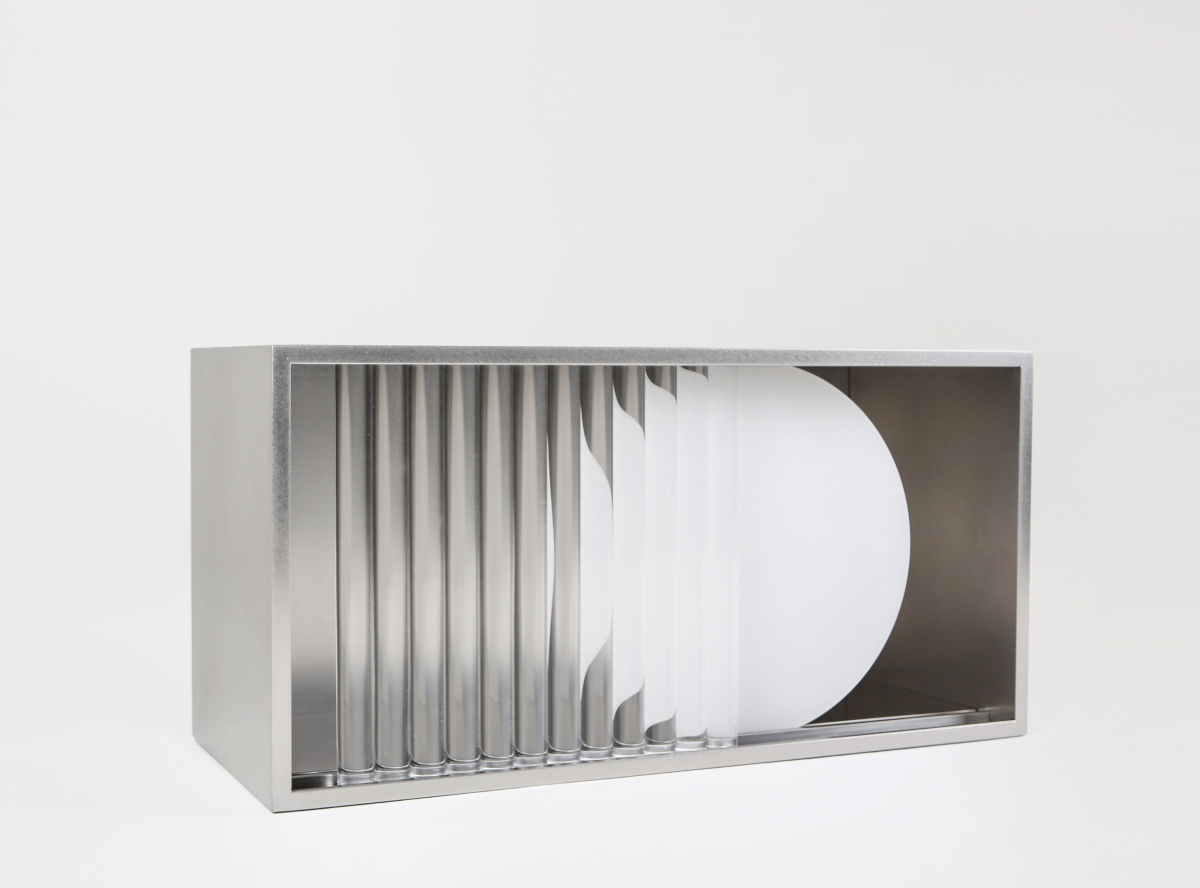
Kang Jihye, cabinet 01, acrylic and stainless steel,
700×310×360mm, 2018 (©Kwon Hyemin)
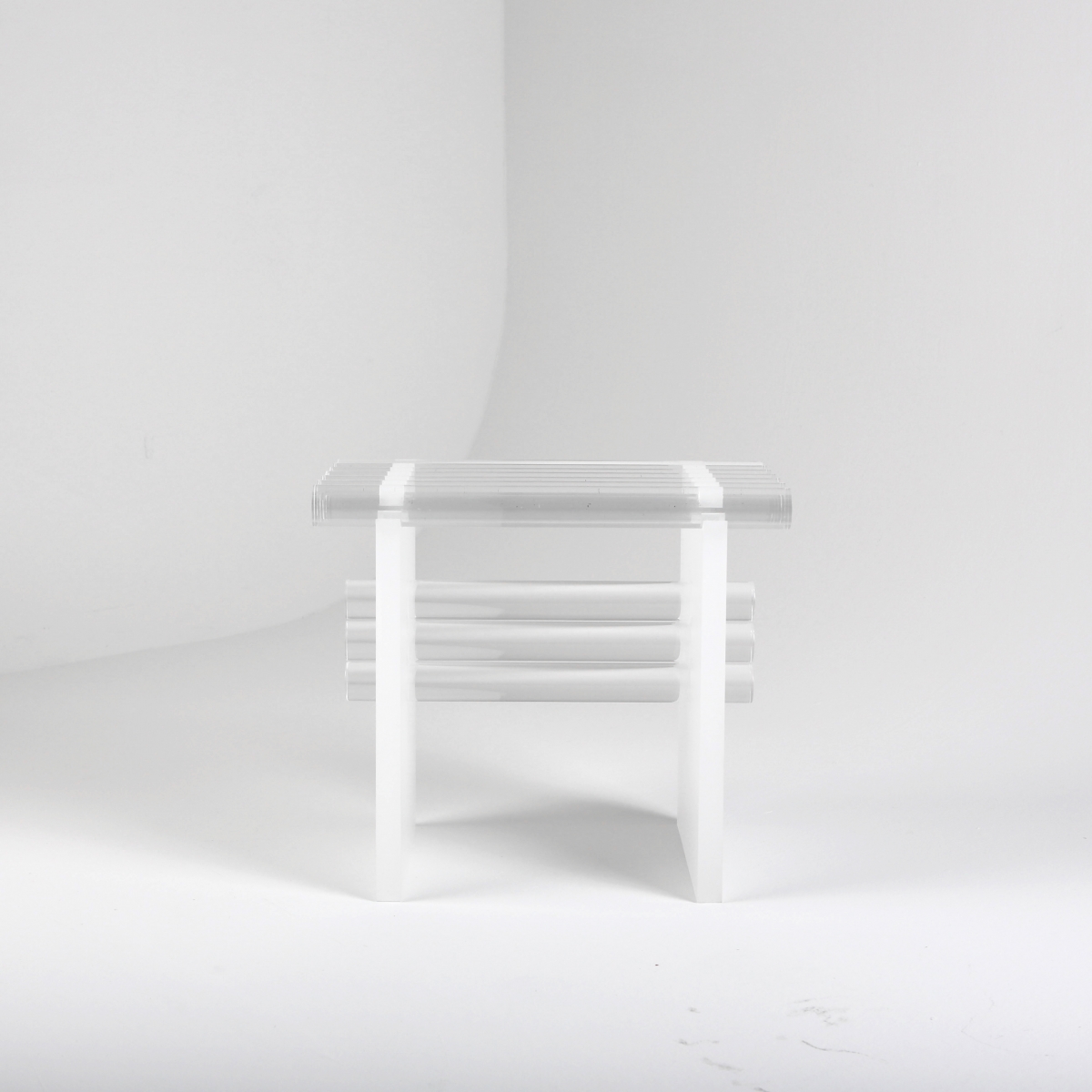
Kang Jihye, stool 02, acrylic, 450×280×400mm, 2018 (©Kwon Hyemin)
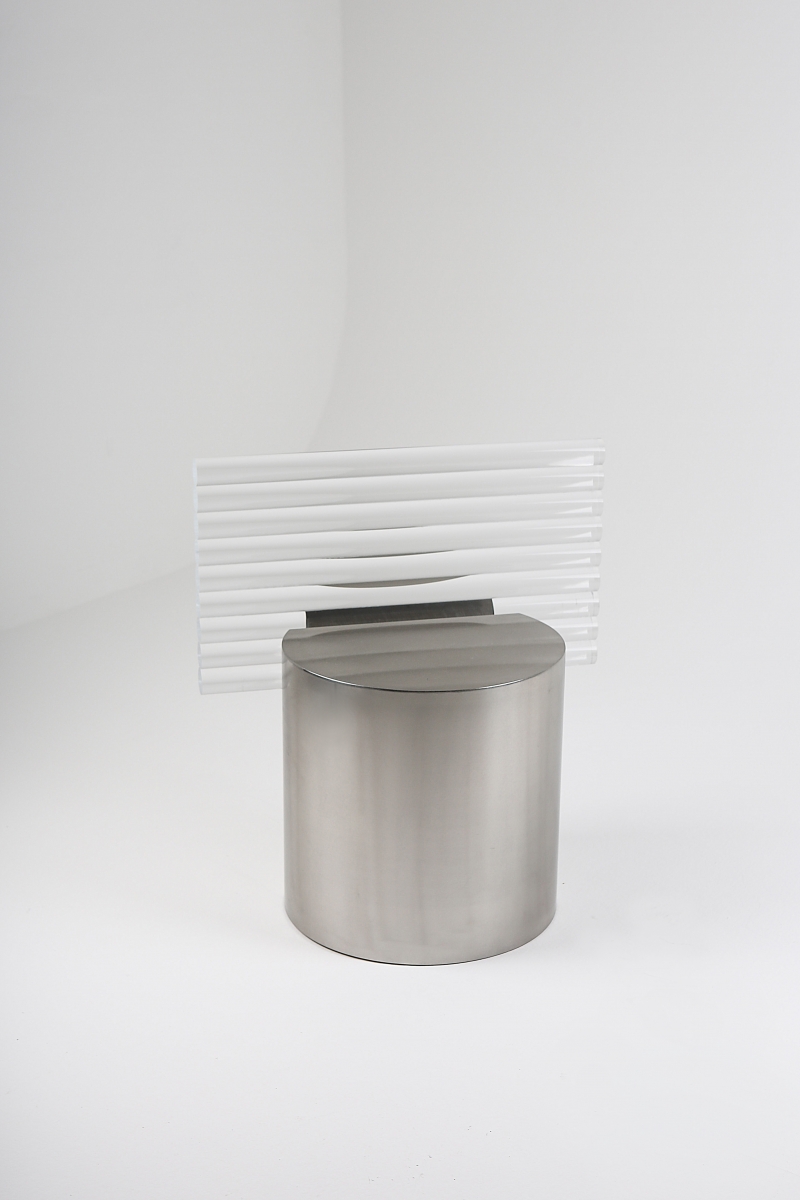
Kang Jihye, chair 01, acrylic and stainless steel,
600×450×700mm, 2017 (©Kwon Hyemin)
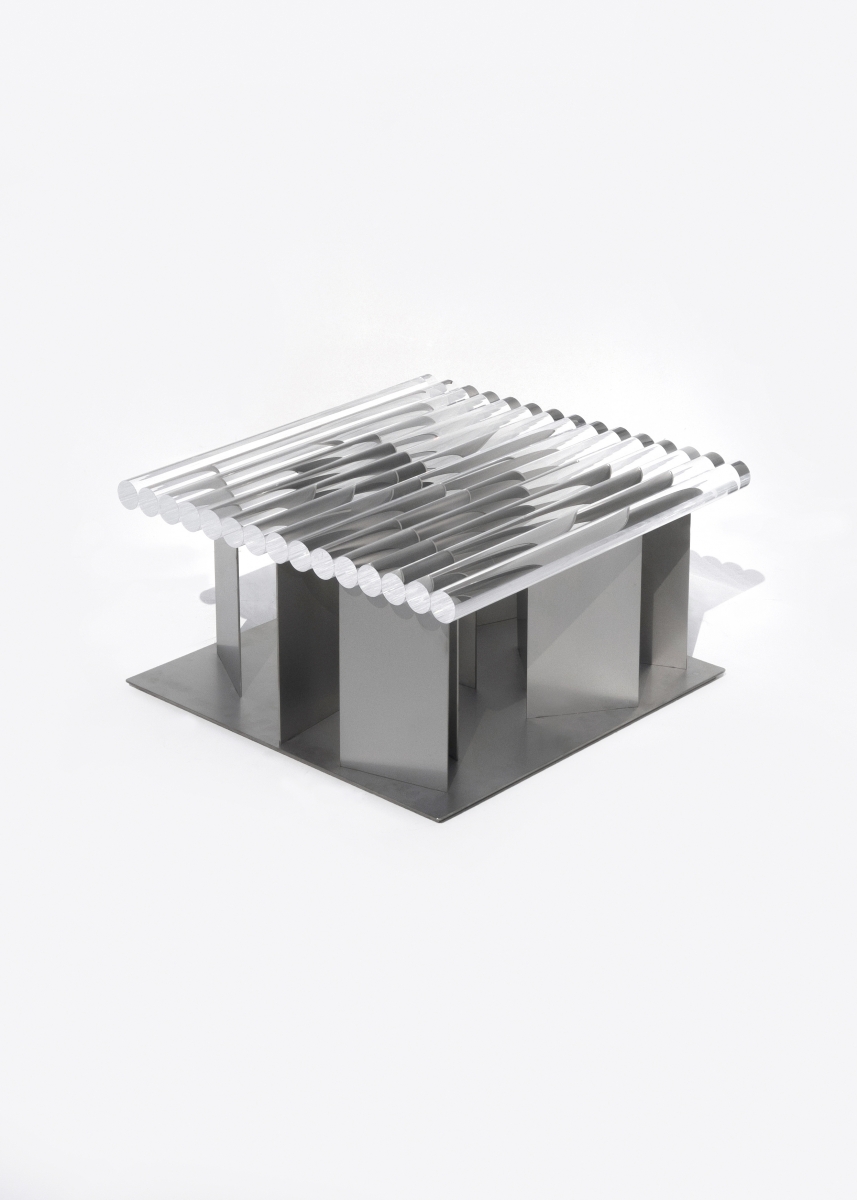
Kang Jihye, low table 01, acrylic and stainless steel, 600×600×300mm, 2017 (©Ahn Sunguen)
jihyekang.com






